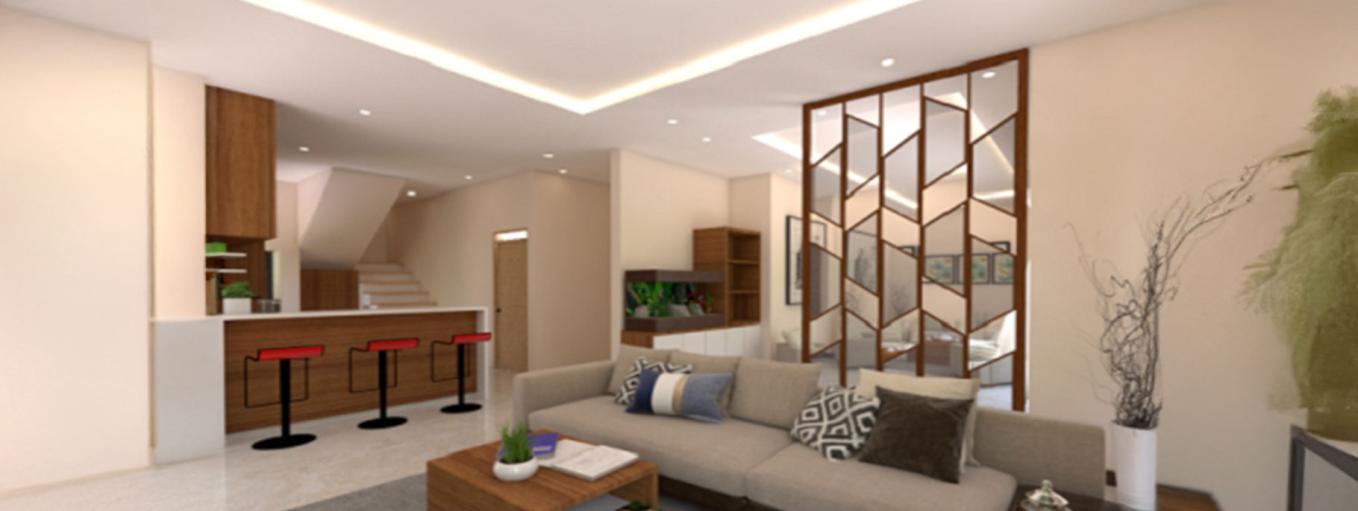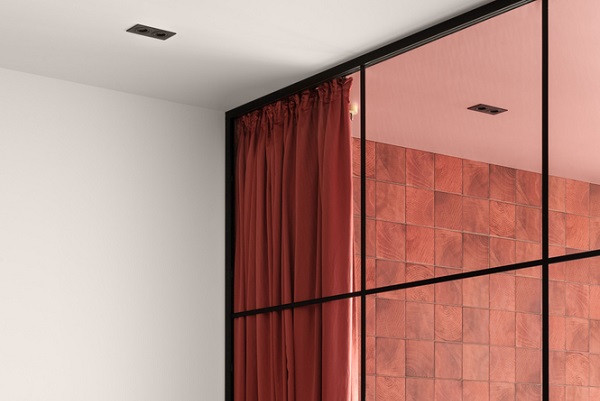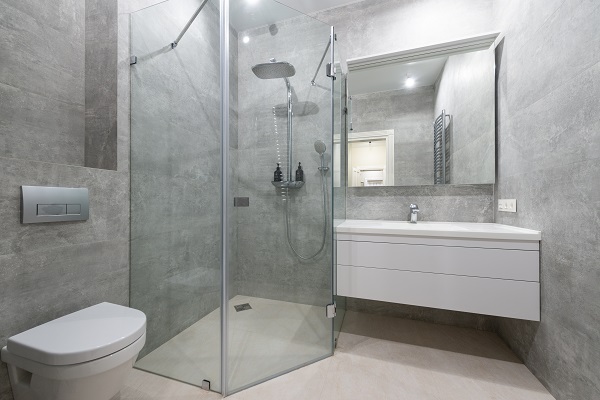


Glass as a material is gaining nods from many interior designers for its sleek design, easy installation and even easier maintenance. In contemporary designs, these qualities of glass allow designers to create minimalist spaces with ease while exploring and enhancing them in unique ways as opposed to using the conventional partition walls.

© A flat in Mumbai designed by MuseLAB, Photo by Sameer Tawde
Using glass partitions in between spaces helps us subtly define the areas according to their usage. It can offer an unobstructed view around the home, creating an illusion of a larger space. How a glass partition wall influences its space depends on the area of application, type of installation, the type of glass used, its texture and transparency.

©Mumbai Apartment designed by Nelly Prodan Design; Photo by Yevhenii Avramenko
A sliding or folding partition can completely open up and merge two spaces into one. The glass can be framed in smaller panels or can be a single full-height toughened glass partition. While float or toughened glass is used in most partition wall designs, the grade of glass differs sometimes as per the area or room it divides. Glass is highly customizable, and is also available in curved shapes. Read more glass - the hero of modern interiors.

© Gargi Phondekar
Nowadays, combined living and dining areas are a common feature in many apartment designs. A playfully patterned partition between the two accentuates this separation without compromising on our line of vision. When combining two materials for a partition, generally a clear or tinted glass looks better in an abstract pattern, while a textured or decorative glass stands out when viewed in larger panels.
While clear glass is recommended for an unobstructed view, textured glass, like the Saint-Gobain Masterglass, is perfect to achieve privacy wherever desired. Decorative glasses like Fabric laminated, Ceramic fritted or Tinted glass are perfect for creating a stunning accent wall for your homes! Read more - Exclusive Tips to Design Mid-Century Theme Bedroom with Tinted Glass & Mirrors

© Anansi Imaging. A home in Bangalore designed by 1LeapingFrog Studio
Portions of glass in wooden or other opaque partitions add lightness and break the monotony with transparency and texture. Glass being highly customizable, can be designed to fit in any shape.
There are various types of glass available in the market, in varying thicknesses. The thickness required depends on the area of application and panel size required. For a full-height partition that requires a larger panel size, toughened glass of 10mm to 12mm thickness is preferred. Float glass of 8mm to 10mm is also considered if the panel size is small, usually in combination with metal or wood framing.

©Nolan Everitt
We can achieve any desired pattern and texture in smaller panels of glass: keeping it tinted in a quirky colour, using sandblasted glass, or by adding a pattern with elegant etching. A combination of bevelled glass with decorative framing can impart a vintage appearance while creating different patterns in design and transparency. In cases where the glass is being used in larger panels, toughened glass is also suitable.

© Max Vakhtbovych
Working from home has become the new normal. It is important to create the right atmosphere which is bright and inviting, while offering the privacy needed for focused work. For offices, full height framed partitions with acoustic glass can greatly reduce the noise transmission. Frosted or etched glass helps to maintain an illuminated office space while ensuring privacy.
Read more about Optimising Office Spaces - Seven Glass Options for Partitions
Laminated glass, presenting a lot of strength, can also be used in interiors as staircase treads or railing.

©Trudy
Partition walls in bathrooms are usually etched or frosted to ensure that light passes through while some privacy is maintained. In bathrooms and adjoining areas, self-cleaning glass is often preferred for the ease of maintenance, and is usually frameless, fixed in position with D-glass clamps.
Because of its sleek design, a correctly positioned glass partition can also replace any non-load bearing wall, thereby increasing the usable area. For bathroom walls too, lacquered glass, like the SGG Planilaque range, adds vibrant colour and is humidity resistant and hence durable.

© Max Vakhtbovych
Because of its versatile properties encompassing both transparency and reflectivity, glass partitions can be innovatively combined with decorative lighting features. Be it a divider or a separating wall, glass partitions can also feature as the accent wall in your living room.
Textured Glass panels, as well as tinted glass partitions, interact very well with lighting, becoming the focus in any space. Lacquered glass offers a great variety of colour shades and textures.
Robert Denning once said that ‘Texture and pattern should function as a surprise’. Available in a range of colours, textures and patterns, glass partitions can wonderfully spice up your homes in different ways.
What are the benefits of using glass partitions in home interiors?
Glass partitions offer a chic and modern way to divide spaces while maintaining an open and airy feel. They allow light to flow through, making rooms feel larger and more connected, and can be customized to fit various design styles, adding both functionality and aesthetic appeal to interiors.
What types of glass are commonly used for partitions, and how do they differ?
Common types of glass for partitions include clear glass for unobstructed views, textured glass for added privacy, and decorative glasses like fabric laminated or tinted glass for accents. Each type offers different levels of transparency, texture, and aesthetic appeal, catering to various design needs.
How does the thickness of glass partitions affect their application?
The thickness of glass partitions depends on the area of application and the required panel size. For larger, full-height partitions, toughened glass of 10mm to 12mm thickness is preferred, while smaller panels may glass of 8mm to 10mm thickness, ensuring both safety and stability.
What are some creative ways to use glass partitions in home interiors?
Glass partitions can be used as accent walls, combined with decorative lighting, or incorporated into work-from-home zones to provide privacy while maintaining a sense of openness. They can also replace non-load-bearing walls, increasing usable space and enhancing the overall layout of a home.
What are the advantages of using lacquered glass in bathroom partitions?
Lacquered glass, like the SGG Planilaque range, is ideal for bathroom partitions due to its opacity and resistance to humidity and durability. It adds vibrant color and a glossy finish to bathroom spaces, while maintaining privacy enhancing both functionality and design.
Aasavari is an architect and designer from Mumbai. A trekking enthusiast, she tries to find stories in all the places. Read More